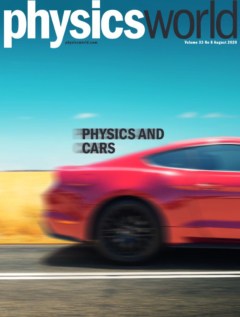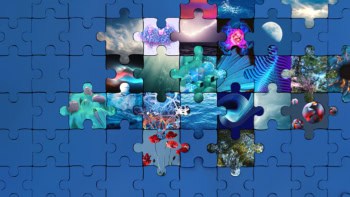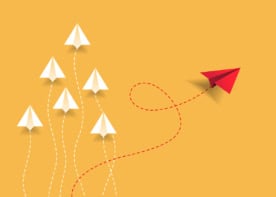
Whether you love cars or hate them, they do rely on plenty of fascinating physics-based concepts, as the new special issue of Physics World reveals.
Take the fuel-injection systems that let cars burn precise, electronically controlled amounts of fuel far more efficiently than old-fashioned carburettors. At their heart lie ultrasonic piezoelectric transducers, which – as David R Andrews from Cambridge Ultrasonics explains – are also vital for humble parking sensors.
Of course, petrol or diesel cars still spew out lots of carbon dioxide, which is one reason why more and more of us are turning to electric vehicles. Susan Curtis shows how the electric-car industry is working hard to make life easier for drivers worried by the practicalities of owning an electric vehicle, offering smart charging, wireless charging and power points in street furniture.
In fact, modern cars are so hi-tech that they contain as many as 150 separate “electronic control units” (ECUs), even leading us steadily towards a world of self-driving or even driverless cars. That prospect might sound great, but the ECUs are a target for hackers. Stephen Ornes reveals how that’s providing new ways to steal vehicles or even endanger passengers’ lives.
On a more positive note, we can be thankful that modern cars are far safer than in the past. Even racecars, such as those on American NASCAR tracks, have benefited from better structural support, seat belt restraints and barriers. Diandra Leslie-Pelecky – author of The Physics of NASCAR – shows how a great way to enhance safety is through science.
If you’re a member of the Institute of Physics, you can read the whole of Physics World magazine every month via our digital apps for iOS, Android and Web browsers. Let us know what you think about the issue on Twitter, Facebook or by e-mailing us at pwld@ioppublishing.org.
For the record, here’s a rundown of what else is in the issue.
• CERN collider gets design go-ahead – The European particle-physics strategy update proposes further work on a huge 100 km circular collider at CERN, but a final decision to build it will not be made until 2026, as Michael Banks reports
• Rising from the pandemic – Physicists in China are beginning to return to the lab following the COVID-19 pandemic, but many of their projects face delays, as Ling Xin reports
• COVID-19: an economic perspective – J Doyne Farmer – a physicist who has studied the economic impact of the COVID-19 pandemic – talks to Benjamin Skuse about lockdown easing and the prospects of financial recovery
• Putting new physics on the syllabus – Niki Bell calls on physicists to insist that exam boards integrate modern discoveries into the education system
• Survival of the fittest –COVID-19 has clobbered the global economy, which is why – argues James McKenzie – innovation is so vital for business success
• The power of authority – the COVID-19 pandemic has underlined why the authority of science is so important – and how it’s so easy to lose. Robert P Crease explains
• The science of racing safely – Being a racecar driver in NASCAR is a dangerous job. One small mistake can send cars flying, cause multi-car crashes and, in some cases, be fatal. Diandra Leslie-Pelecky explores the science behind some of the features in NASCAR that are designed to keep the drivers safe
• Charging ahead – With electric cars set to enter the mainstream over the next few years, Susan Curtis investigates the new charging solutions that will be needed to power what are effectively large batteries on wheels
• How to hack a self-driving car – Cars that drive themselves may one day improve road safety by reducing human error – and hopefully deaths by accidents too. However, the hardware and software behind the technology opens up a range of opportunities to hackers, as Stephen Ornes finds out

Hubble trouble, fighting ‘flat-Earthers’ and blue lasers for batteries: the July 2020 edition of Physics World is now out
• Good vibrations – Without mechanical vibrations, a modern car wouldn’t get far down the road – in fact it wouldn’t start. David R Andrews examines the role of sound and ultrasound in fuel injection and parking sensors
• Artificial stupidity – Margaret Harris reviews You Look Like a Thing and I Love You: How Artificial Intelligence Works and Why It’s Making the World a Weirder Place by Janelle Shane
• A matter of trust – Philip Ball reviews Why Trust Science? by Naomi Oreskes
• Scepticism beyond pessimism – Andrew Glester reviews For Small Creatures Such As We: Rituals and Reflections for Finding Wonder by Sasha Sagan
• Our perilous planet – David Appell reviews Dangerous Earth: What We Wish We Knew about Volcanoes, Hurricanes, Climate Change, Earthquakes, and More by Ellen Prager
• In it for the long run – For the past 22 years, physicist Corey Gray has worked at the Laser Interferometer Gravitational-wave Observatory in Hanford, Washington. He spoke to Tushna Commissariat about building LIGO, the big detection, inspiring the next generation of Indigenous physicists, and having a healthy work–life balance



